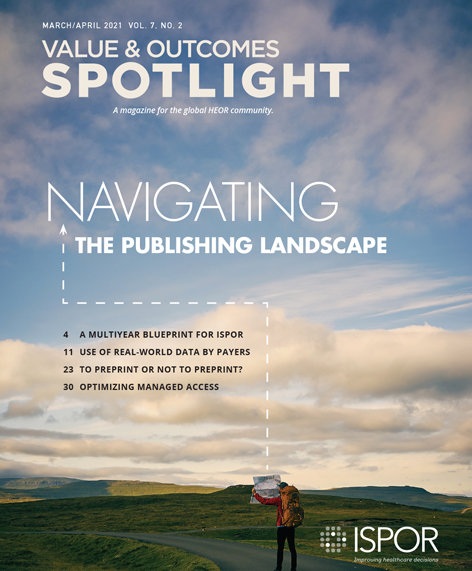Choosing the Right Path in HEOR Publishing
In a world inundating us with information through emails, social media posts, virtual meetings, conference calls, television, paper media, and (hopefully soon) in-person interactions, an implicit expectation is that, ironically, humans can process information at the same pace as the platforms being used to deliver these communications. This plethora of communication forums can be frustrating—and at times, overwhelming to their consumers who do not have the time or the capacity to digest the gluttony of information served to them!
The gallimaufry of chimerical data, rumor, opinion, conspiracy, and unsubstantiated conclusion can muddle scientific facts, truths, and corroborated results. In this communication maelstrom, how can we as health economics and outcomes research (HEOR) professionals communicate simply and effectively when the messages we convey are often complex and science-heavy and experience a time lag due to rigorous review required by the organizations for which we work and/or the media outlets through which we communicate? How can we maximally propagate our work so that it reaches the broadest audience and does not end up at the bottom of their “digital pile?” Is there value in the potential tradeoff between a rapid, nonpeer-reviewed publication and a longer-term peer-reviewed publication? If an open access peer-reviewed platform is chosen, then who will be responsible for paying the publication fee?
Given the increased importance and accumulating volumes of metadata utilized in explaining and validating clinical and economic outcomes, can we use sophisticated computational algorithms to reduce the human burden of conducting systematic literature reviews, formal meta-analyses, and indirect treatment comparisons while maintaining the quality of the data and conclusions?
Indeed, it is one thing to execute these studies but quite another to communicate the findings and conclusions—yet both are essential to our science and ultimately the success of our profession. Communication challenges existed well before the COVID-19 pandemic but have multiplied as a result of increased reliance on digital communications.
In this issue, we feature the frontiers of the rapidly evolving HEOR publishing landscape: (1) the movement towards open access scientific publication, which directly impacts Value in Health and other high-impact journals in our space; (2) preprint portals that serve as rapid but potentially controversial mechanisms for publishing our work that typically occurs without peer review; and (3) use of metatools that generate “evidence on the evidence” by culling through established portals such as PubMed and clinicaltrials.gov and creating automated summaries of existing publications.
Given the myriad options available to us for HEOR publishing, we should leverage these opportunities to navigate the changing publishing landscape and choose the path that best meets our purpose!
Zeba M. Khan, RPh, PhD and
Laura T. Pizzi, PharmD, MPH
Editors-in-Chief, Value & Outcomes Spotlight


